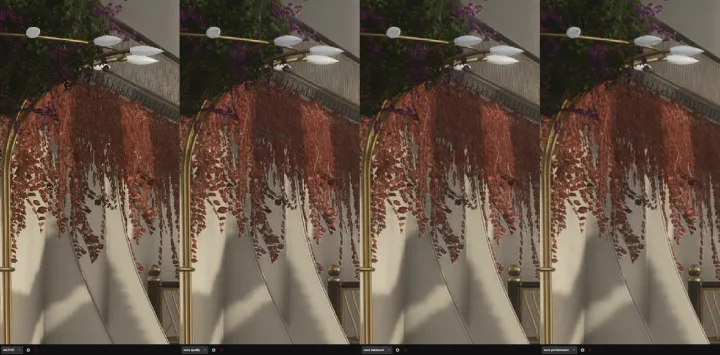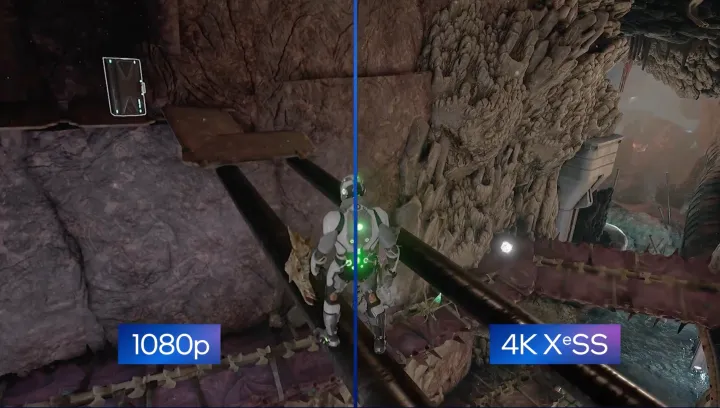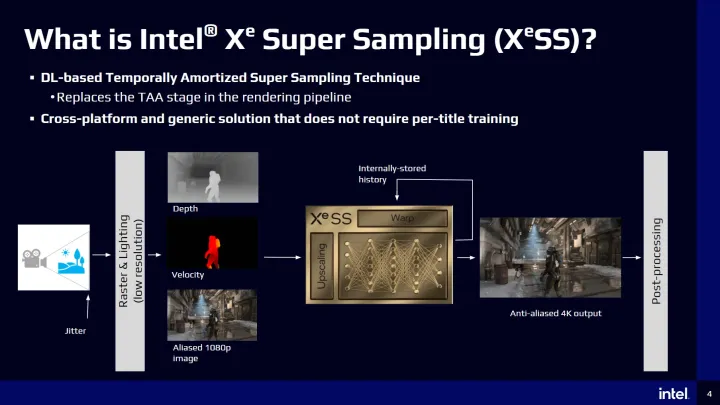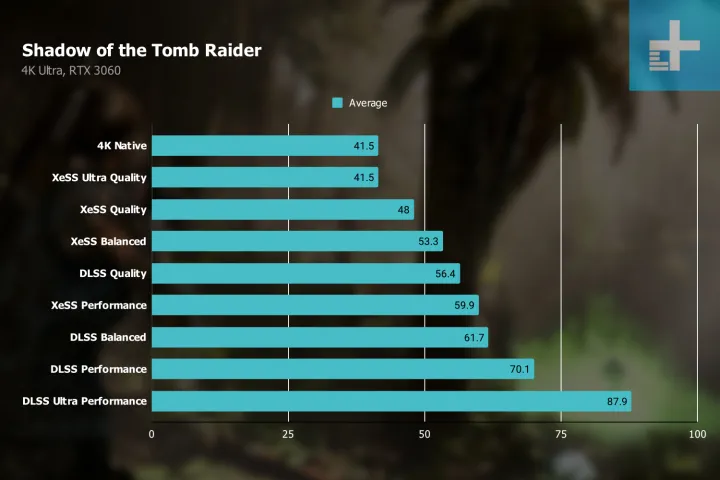What is Intel XeSS? How does Nvidia DLSS compare?
Intel XeSS is an exciting development in the world of upgraded PC gaming. Although Intel XeSS is similar to the technology we know well from AMD and Nvidia, it also has its own advantages and disadvantages. The following article has compiled everything you need to know about Intel XeSS, how it works, what games it supports, and how it compares with competitors from AMD and Nvidia.
What is Intel XeSS?

Intel XeSS or Xe Super Sampling is an upgraded feature of the Intel Arc Alchemist graphics card. It works by rendering the game at a lower resolution, then upscaling the game using Machine Learning and specialized AI hardware found in the GPU. This helps it improve performance while maintaining as much image quality as possible.
XeSS works a lot like Nvidia's Deep Learning Super Sampling (DLSS). The main difference is that Intel XeSS supports graphics cards from many vendors, while DLSS is limited to Nvidia graphics cards.
Intel was able to achieve this by offering two different versions of XeSS - one for Arc GPUs, such as the Arc A770 and A750, and one for graphics cards made by other vendors. The version for Intel Arc will likely perform better thanks to its advanced upgrade model. It is also enhanced by Xe Matrix Extension (XMX) AI cores included in Intel Arc. The XeSS that AMD and Nvidia card owners can try is a bit simpler, with a less powerful upgrade model and DP4a instructions, making it inferior to Intel's XMX core.

With that said, while the model used for non-Intel GPUs may be simpler, we still see that Intel XeSS provides similar performance gains across the board.
In supported games, players will be able to choose between four quality modes. High quality mode provides better image quality at the cost of performance, while low quality mode increases performance more but may not look as good:
| Regime | Resolution scaling factor |
| Performance | 2x |
| Balanced | 1.7x |
| Quality | 1.5x |
| Ultra quality | 1.3x |
In addition to more options, it looks like XeSS can scale input resolutions even higher than AMD's FidelityFX Super Resolution (FSR). 4 quality modes will give players more options, as DLSS and FSR only offer 3 quality modes, with some titles supporting an optional fourth mode.
How does Intel XeSS work?
XeSS is not too complicated to understand. Instead of running the game at its native resolution (say 4K), the game requires various inputs from the game at a lower resolution (say 1080p). Those inputs are fed into the XeSS upgrade engine, which includes an AI model to enhance upgrade capabilities. Theoretically, the end result will be an image with the original resolution but with much higher performance.

For specifics, XeSS takes depth, motion, color, and lighting inputs from the game. After performing the upgrade, the final results from these inputs will be stored in the internal history. That history provides data for the next frame and the cycle continues. While that's happening, XeSS takes the frame you see and performs temporal anti-aliasing (TAA) to remove jagged edges. XeSS replaces traditional anti-aliasing because it can upscale and perform anti-aliasing in the same step.
The secret is Machine Learning. The Intel Arc Alchemist graphics card includes XMX cores, running an AI model to perform upscaling. They are similar to Nvidia's Tensor cores on RTX 30-series graphics cards, and Intel says they provide the best quality with XeSS.
However, XeSS can also operate without the XMX core. Graphics cards that support DP4a instructions - useful for AI computing - also work. AMD's latest RX 6000 graphics cards support these instructions, as do some of Nvidia's most recent generations. It's probably safe to assume that Nvidia's RTX 40-series and AMD RDNA 3 will also support XeSS.
Intel XeSS release date
Intel XeSS has always been tied to the Arc Alchemist graphics card and as such, it suffered a lot of delays before hitting the market.
However, now that Intel Arc is available, so is XeSS. The official release date for Intel's flagship desktop GPU is set for October 12, 2022, and now the feature is gradually expanding to more games.
Compare Intel XeSS vs Nvidia DLSS
Intel XeSS looks a lot like Nvidia DLSS, and these two upgrades offer similar performance. However, the tests show that Nvidia continues to dominate the number 1 position, but Intel Arc is not bad either.
Both DLSS and XeSS use AI to increase upscaling and provide TAA to smooth images after being upscaled. The main difference is that XeSS can run on dedicated XMX cores or on generic hardware that supports DP4a instructions. DLSS can only run on dedicated Tensor cores on Nvidia 20-series, 30-series, and 40-series graphics cards.
Intel has confirmed that XeSS does not require game-specific training. This was a major setback for DLSS when it was first released, but Nvidia has since built the feature to run on a general AI model instead of a per-title model.

In terms of raw performance, comparing Intel XeSS vs Nvidia DLSS shows that Nvidia DLSS is still better, but Intel may be doing better than AMD did with FSR. Just look at the Shadow of the Tomb Raider benchmark above - almost all of the XeSS results are in the bottom half of the chart. XeSS Ultra Quality hits the same number of frames per second as native 4K, but Performance mode boosts that number to 59.9. However, Nvidia DLSS took the top 3 spots with scores of 61.7, 70.1 and a whopping 87.9 in Ultra Performance mode.
You should read it
- Intel ARC Xe-HPG 'Alchemist' GPU Leak: High Performance, Launching in 2022
- Unfair competition, Intel was fined EUR 1.06 billion in Europe
- Intel will unveil the 'new computing era' at IFA 2014
- Intel launched a super-saving computer model priced from 3 million
- Intel's 9th generation microprocessor can be released on October 1
- What is the Intel NUC?
 Practice typing with 10 fingers with Mario Teaches Typing online, an extremely attractive typing practice game
Practice typing with 10 fingers with Mario Teaches Typing online, an extremely attractive typing practice game What is Microsoft's Auto Super Resolution? How does DLSS and FSR compare?
What is Microsoft's Auto Super Resolution? How does DLSS and FSR compare? What is Janitor AI?
What is Janitor AI? What is SpicyChat AI?
What is SpicyChat AI? What is NPU?
What is NPU? Compare Kaby Lake and Sky Lake
Compare Kaby Lake and Sky Lake